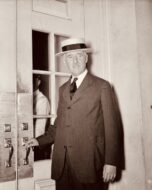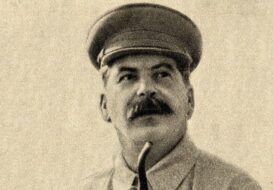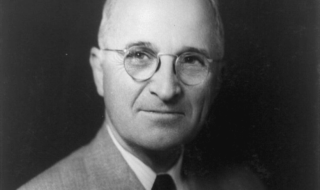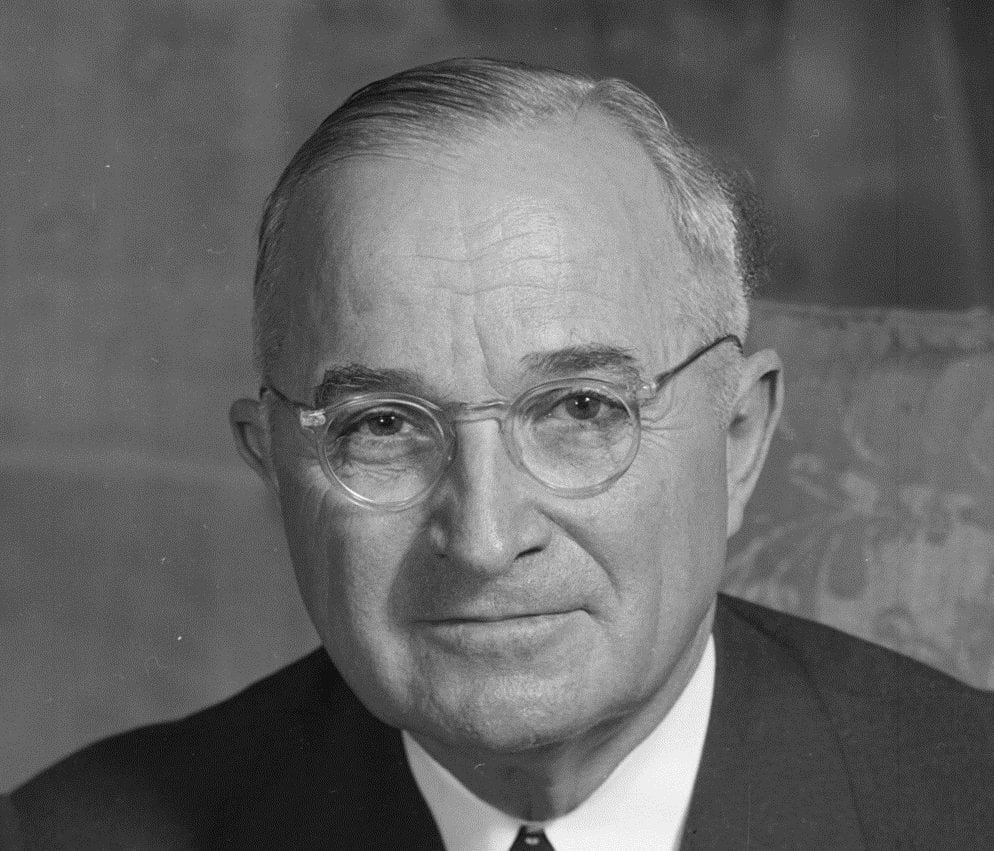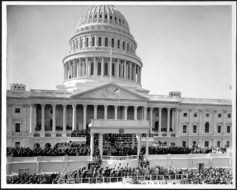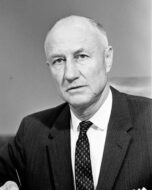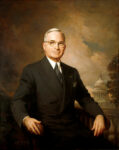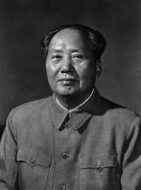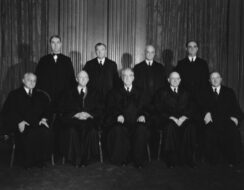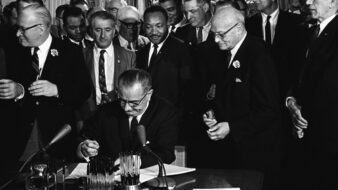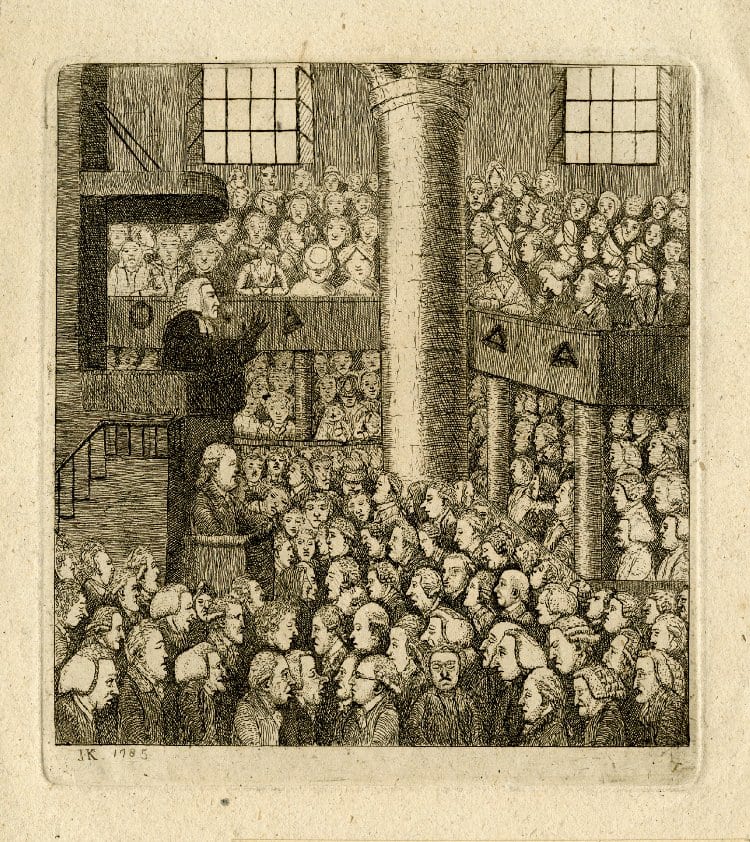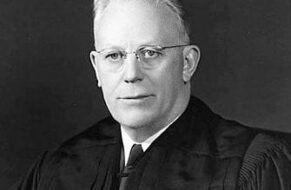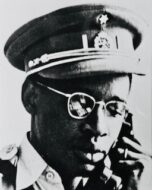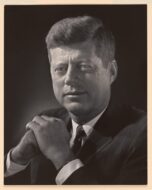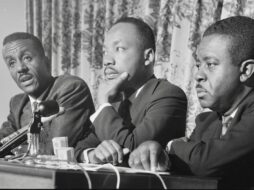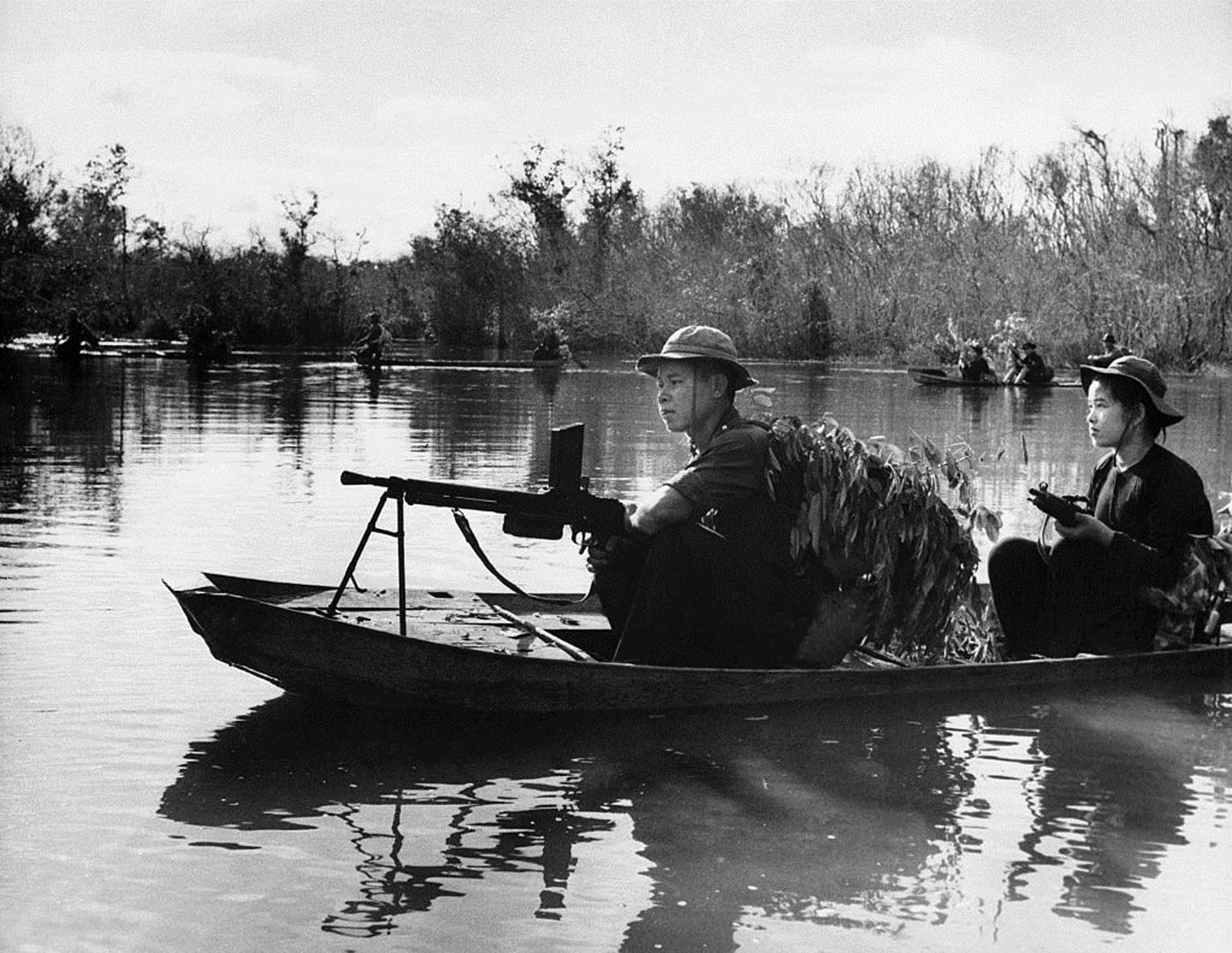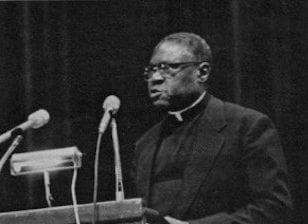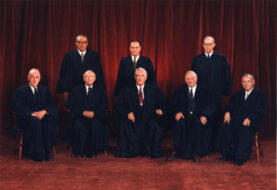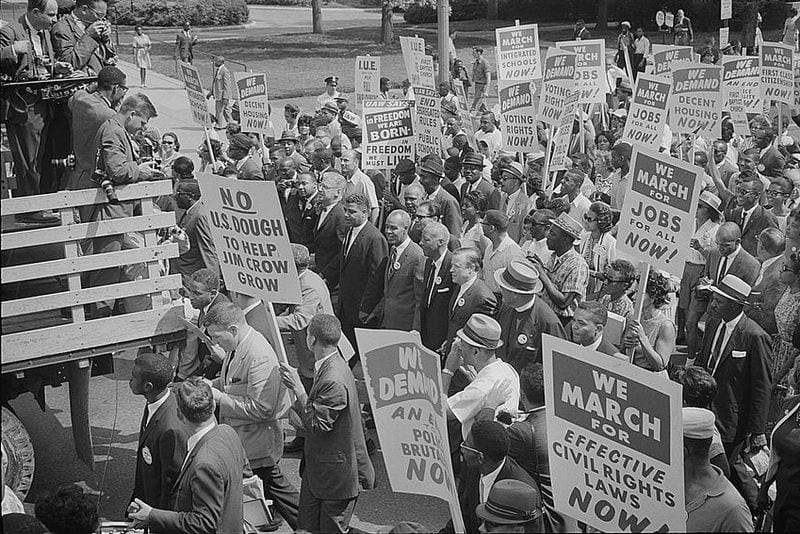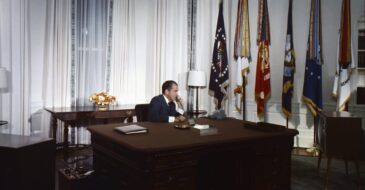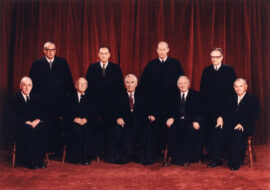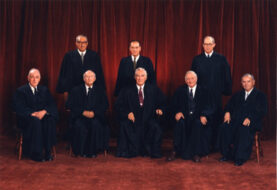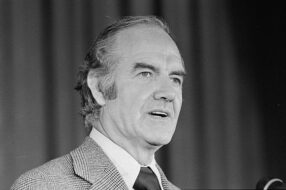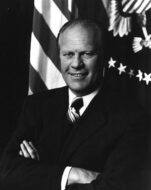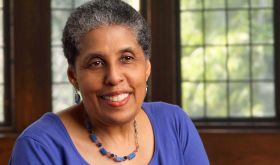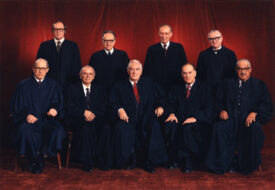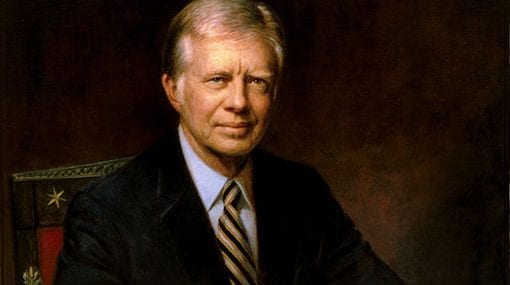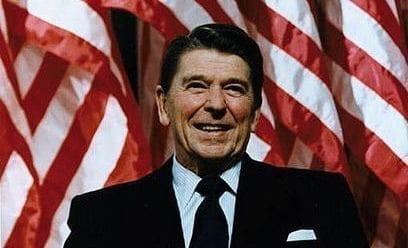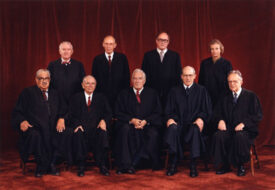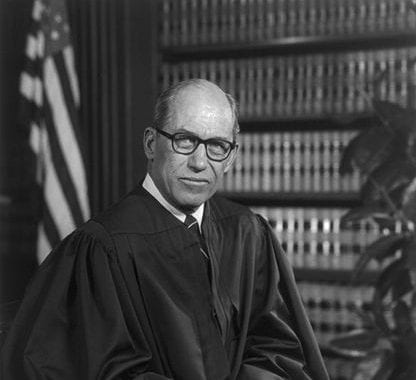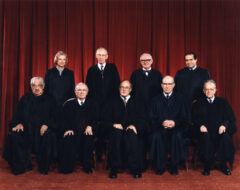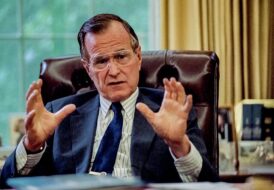

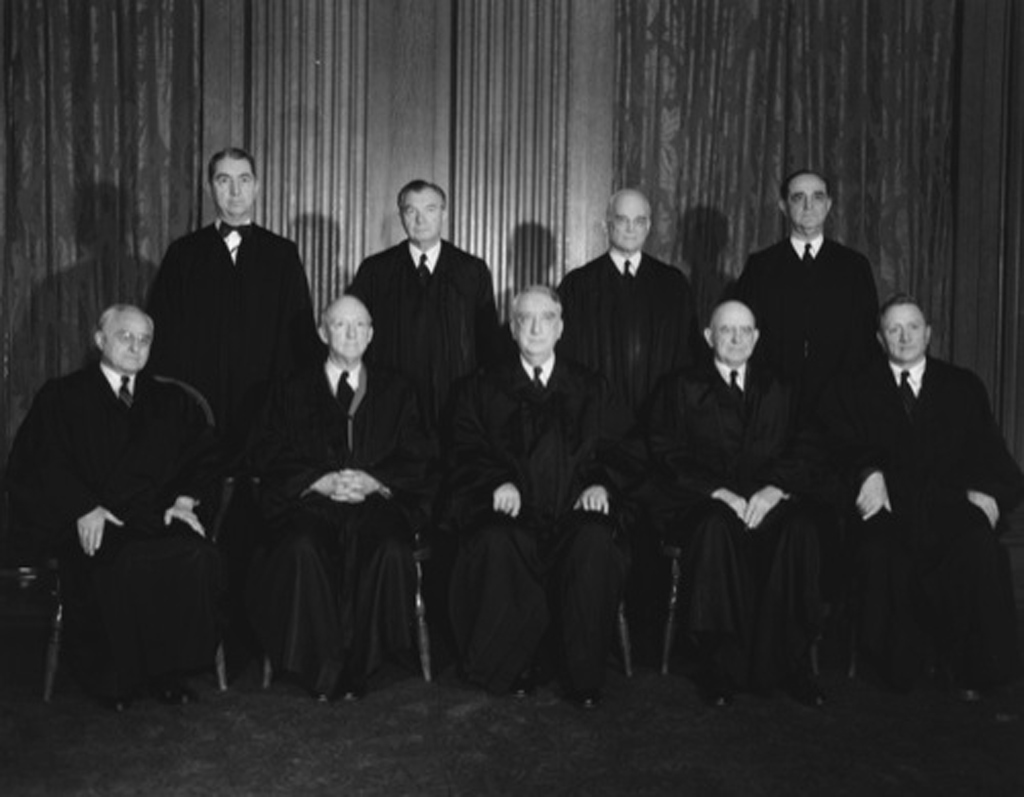
Introduction
Joseph Beauharnais was a member of a white supremacist group known as the White Circle Using derogatory language about African Americans he distributed leaflets to the Chicago government petitioning them to prevent further settlement of Blacks in Chicago. Beauharnais was convicted under an Illinois state law punishing speech that “exposes the citizens of any race, color, creed, or religion to contempt, derision, or obloquy.” Using the ad hoc self-restraintist balancing test (see Glossary), Justice Felix Frankfurter (1882–1965) upheld the Illinois law as a reasonable exercise of the state’s police powers. The dissents of Justices William O. Douglas (1898–1980) and Hugo Black (1886–1971) provide strong justifications for tolerating offensive speech, and warn of the dangers of censorship.
Though Beauharnais has been significantly narrowed, if not completely emasculated by subsequent opinions, it is included in this volume as an example of a group libel law, which many European countries have adopted to protect minorities. Such laws punish the defamation of groups based on race, creed, color, age, sexual orientation, and/or place of national origin. Some European group libel laws punish Holocaust denial. Some of today’s critics of “hate speech” would like to carve out a group libel exception to the First Amendment to protect the equal dignity of oppressed groups in the marketplace of ideas. For this reason, the dissents of Black and Douglass remain relevant.
Source: 343 U.S. 250, https://www.law.cornell.edu/supremecourt/text/343/250.
- JUSTICE FRANKFURTER delivered the opinion of the Court.
The petitioner was convicted upon information in the Municipal Court of Chicago of violating § 224a of Division 1 of the Illinois Criminal Code, Ill.Rev.Stat.1949, c. 38, § 471. He was fined $200. The section provides:
It shall be unlawful for any person, firm, or corporation to manufacture, sell, or offer for sale, advertise or publish, present or exhibit in any public place in this state any lithograph, moving picture, play, drama, or sketch, which publication or exhibition portrays depravity, criminality, unchastity, or lack of virtue of a class of citizens, of any race, color, creed, or religion which said publication or exhibition exposes the citizens of any race, color, creed, or religion to contempt, derision, or obloquy or which is productive of breach of the peace or riots. . . .
Beauharnais challenged the statute as violating the liberty of speech and of the press guaranteed as against the states by the due process clause of the Fourteenth Amendment, and as too vague, under the restrictions implicit in the same clause, to support conviction for crime. The Illinois courts rejected these contentions and sustained defendant’s conviction. We granted certiorari[1] in view of the serious questions raised concerning the limitations imposed by the Fourteenth Amendment on the power of a state to punish utterances promoting friction among racial and religious groups.
The information, cast generally in the terms of the statute, charged that Beauharnais “did unlawfully . . . exhibit in public places lithographs, which publications portray depravity, criminality, unchastity, or lack of virtue of citizens of Negro race and color and which exposes [sic] citizens of Illinois of the Negro race and color to contempt, derision, or obloquy.” The lithograph complained of was a leaflet setting forth a petition calling on the mayor and City Council of Chicago “to halt the further encroachment, harassment, and invasion of white people, their property, neighborhoods, and persons, by the Negro. . . .” Below was a call for “one million self-respecting white people in Chicago to unite,” with the statement added, “If persuasion and the need to prevent the white race from becoming mongrelized by the negro will not unite us, then the aggressions . . . rapes, robberies, knives, guns, and marijuana of the negro, surely will.” This, with more language, similar if not so violent, concluded with an attached application for membership in the White Circle League of America, Inc.
The testimony at the trial was substantially undisputed. From it the jury could find that Beauharnais was president of the White Circle League; that, at a meeting on January 6, 1950, he passed out bundles of the lithographs in question, together with other literature, to volunteers for distribution on downtown Chicago street corners the following day; that he carefully organized that distribution, giving detailed instructions for it; and that the leaflets were in fact distributed on January 7 in accordance with his plan and instructions. The court, together with other charges on burden of proof and the like, told the jury, “If you find . . . that the defendant, Joseph Beauharnais, did . . . manufacture, sell, or offer for sale, advertise, or publish, present or exhibit in any public place the lithograph . . . , then you are to find the defendant guilty.” He refused to charge the jury, as requested by the defendant, that, in order to convict, they must find “that the article complained of was likely to produce a clear and present danger of a serious substantive evil that rises for above public inconvenience, annoyance, or unrest.” Upon this evidence and these instructions, the jury brought in the conviction here for review. . . .
Libel of an individual was a common-law crime, and thus criminal in the Colonies. Indeed, at common law, truth or good motives was no defense. In the first decades after the adoption of the Constitution, this was changed by judicial decision, statute, or constitution in most states, but nowhere was there any suggestion that the crime of libel be abolished. Today, every American jurisdiction—the forty-eight states, the District of Columbia, Alaska, Hawaii, and Puerto Rico—punish libels directed at individuals. “There are certain well-defined and narrowly limited classes of speech the prevention and punishment of which has never been thought to raise any constitutional problem. These include the lewd and obscene, the profane, the libelous, and the insulting or ‘fighting’ words.” Such were the views of a unanimous Court in Chaplinsky v. New Hampshire.
No one will gainsay that it is libelous falsely to charge another with being a rapist, robber, carrier of knives and guns, and user of marijuana. The precise question before us, then, is whether the protection of “liberty” in the due process clause of the Fourteenth Amendment prevents a state from punishing such libels—as criminal libel has been defined, limited, and constitutionally recognized time out of mind—directed at designated collectivities and flagrantly disseminated. . . . But if an utterance directed at an individual may be the object of criminal sanctions, we cannot deny to a state power to punish the same utterance directed at a defined group unless we can say that this a willful and purposeless restriction unrelated to the peace and wellbeing of the state.
[History of racial strife in Illinois.]
. . . In the face of this history and its frequent obligato of extreme racial and religious propaganda, we would deny experience to say that the Illinois legislature was without reason in seeking ways to curb false or malicious defamation of racial and religious groups, made in public places and by means calculated to have a powerful emotional impact on those to whom it was presented. “There are limits to the exercise of these liberties [of speech and of the press]. The danger in these times from the coercive activities of those who in the delusion of racial or religious conceit would incite violence and breaches of the peace in order to deprive others of their equal right to the exercise of their liberties, is emphasized by events familiar to all. These and other transgressions of those limits the states appropriately may punish.” This was the conclusion, again of a unanimous Court, in 1940 (Cantwell v. Connecticut). . . .
. . . [I]t would be out of bounds for the judiciary to deny the legislature a choice of policy, provided it is not unrelated to the problem and not forbidden by some explicit limitation on the state’s power. That the legislative remedy might not in practice mitigate the evil, or might itself raise new problems, would only manifest once more the paradox of reform. It is the price to be paid for the trial and error inherent in legislative efforts to deal with obstinate social issues. . . .
. . . It is not within our competence to confirm or deny claims of social scientists as to the dependence of the individual on the position of his racial or religious group in the community. It would, however, be arrant dogmatism, quite outside the scope of our authority in passing on the powers of a state, for us to deny that the Illinois legislature may warrantably believe that a man’s job and his educational opportunities and the dignity accorded him may depend as much on the reputation of the racial and religious group to which he willy-nilly belongs as on his own merits. This being so, we are precluded from saying that speech concededly punishable when immediately directed at individuals cannot be outlawed if directed at groups with whose position and esteem in society the affiliated individual may be inextricably involved.
We are warned that the choice open to the Illinois legislature here may be abused, that the law may be discriminatorily enforced; prohibiting libel of a creed or of a racial group, we are told, is but a step from prohibiting libel of a political party.
Every power may be abused, but the possibility of abuse is a poor reason for denying Illinois the power to adopt measures against criminal libels sanctioned by centuries of Anglo-American law. . . .
Libelous utterances not being within the area of constitutionally protected speech, it is unnecessary, either for us or for the state courts, to consider the issues behind the phrase “clear and present danger.” Certainly no one would contend that obscene speech, for example, may be punished only upon a showing of such circumstances. Libel, as we have seen, is in the same class.
We find no warrant in the Constitution for denying to Illinois the power to pass the law here under attack. But it bears repeating—although it should not—that our finding that the law is not constitutionally objectionable carries no implication of approval of the wisdom of the legislation or of its efficacy. These questions may raise doubts in our minds, as well as in others. It is not for us, however, to make the legislative judgment. We are not at liberty to erect those doubts into fundamental law.
Affirmed.
JUSTICE BLACK, with whom JUSTICE DOUGLAS concurs, dissenting.
. . . Today’s case degrades First Amendment freedoms to the “rational basis” level. It is now a certainty that the new “due process” coverall offers far less protection to liberty than would adherence to our former cases compelling states to abide by the unequivocal First Amendment command that its defined freedoms shall not be abridged.
The Court’s holding here and the constitutional doctrine behind it leave the rights of assembly, petition, speech, and press almost completely at the mercy of state legislative, executive, and judicial agencies. . . . My own belief is that no legislature is charged with the duty or vested with the power to decide what public issues Americans can discuss. In a free country, that is the individual’s choice, not the state’s. State experimentation in curbing freedom of expression is startling and frightening doctrine in a country dedicated to self-government by its people. I reject the holding that either state or nation can punish people for having their say in matters of public concern.
The Illinois statute upheld by the Court . . . imposes state censorship over the theater, moving pictures, radio, television, leaflets, magazines, books, and newspapers. No doubt the statute is broad enough to make criminal the “publication, sale, presentation, or exhibition” of many of the world’s great classics, both secular and religious.
The Court condones this expansive state censorship by painstakingly analogizing it to the law of criminal libel. As a result of this refined analysis, the Illinois statute emerges labeled a “group libel law.” This label may make the Court’s holding more palatable for those who sustain it, but the sugar-coating does not make the censorship less deadly. . . . Every expansion of the law of criminal libel so as to punish discussions of matters of public concern means a corresponding invasion of the area dedicated to free expression by the First Amendment. . . .
The Court’s reliance on Chaplinsky v. New Hampshire is also misplaced. New Hampshire had a state law making it an offense to direct insulting words at an individual on a public street. Chaplinsky had violated that law by calling a man vile names “face-to-face.” We pointed out in that context that the use of such “fighting” words was not an essential part of exposition of ideas. Whether the words used in their context here are “fighting” words in the same sense is doubtful, but, whether so or not, they are not addressed to or about individuals. Moreover, the leaflet used here was also the means adopted by an assembled group to enlist interest in their efforts to have legislation enacted. And the fighting words were but a part of arguments on questions of wide public interest and importance. Freedom of petition, assembly, speech, and press could be greatly abridged by a practice of meticulously scrutinizing every editorial, speech, sermon, or other printed matter to extract two or three naughty words on which to hang charges of “group libel.” The Chaplinsky case makes no such broad inroads on First Amendment freedoms. . . .
Unless I misread history, the majority is giving libel a more expansive scope and more respectable status than it was ever accorded even in the Star Chamber. For here it is held to be punishable to give publicity to any picture, moving picture, play, drama, or sketch, or any printed matter which a judge may find unduly offensive to any race, color, creed, or religion. In other words, in arguing for or against the enactment of laws that may differently affect huge groups, it is now very dangerous indeed to say something critical of one of the groups. And any “person, firm, or corporation” can be tried for this crime. “Person, firm, or corporation” certainly includes a book publisher, newspaper, radio or television station, candidate, or even a preacher. . . .
This act sets up a system of state censorship which is at war with the kind of free government envisioned by those who forced adoption of our Bill of Rights. The motives behind the state law may have been to do good. But the same can be said about most laws making opinions punishable as crimes. History indicates that urges to do good have led to the burning of books, and even to the burning of “witches.”
No rationalization on a purely legal level can conceal the fact that state laws like this one present a constant overhanging threat to freedom of speech, press, and religion. Today, Beauharnais is punished for publicly expressing strong views in favor of segregation. Ironically enough, Beauharnais, convicted of crime in Chicago, would probably be given a hero’s reception in many other localities, if not in some parts of Chicago itself. Moreover, the same kind of state law that makes Beauharnais a criminal for advocating segregation in Illinois can be utilized to send people to jail in other states for advocating equality and nonsegregation. What Beauharnais said in his leaflet is mild compared with usual arguments on both sides of racial controversies. . . .
If there be minority groups who hail this holding as their victory, they might consider the possible relevancy of this ancient remark:
“Another such victory and I am undone.” . . .
JUSTICE DOUGLAS, dissenting.
Hitler and his Nazis showed how evil a conspiracy could be which was aimed at destroying a race by exposing it to contempt, derision, and obloquy. I would be willing to concede that such conduct directed at a race or group in this country could be made an indictable offense. For such a project would be more than the exercise of free speech. Like picketing, it would be free speech plus.
I would also be willing to concede that, even without the element of conspiracy, there might be times and occasions when the legislative or executive branch might call a halt to inflammatory talk, such as the shouting of “fire” in a school or a theater.
My view is that if, in any case, other public interests are to override the plain command of the First Amendment, the peril of speech must be clear and present, leaving no room for argument, raising no doubts as to the necessity of curbing speech in order to prevent disaster.
The First Amendment is couched in absolute terms—freedom of speech shall not be abridged. Speech has therefore a preferred position as contrasted to some other civil rights. For example, privacy, equally sacred to some, is protected by the Fourth Amendment only against unreasonable searches and seizures. There is room for regulation of the ways and means of invading privacy. No such leeway is granted the invasion of the right of free speech guaranteed by the First Amendment. Until recent years, that had been the course and direction of constitutional law. Yet, recently, the Court in this and in other cases has engrafted the right of regulation onto the First Amendment by placing in the hands of the legislative branch the right to regulate “within reasonable limits” the right of free speech. This, to me is, an ominous and alarming trend. The free trade in ideas which the Framers of the Constitution visualized disappears. In its place there is substituted a new orthodoxy—an orthodoxy that changes with the whims of the age or the day, an orthodoxy which the majority by solemn judgment proclaims to be essential to the safety, welfare, security, morality, or health of society. Free speech in the constitutional sense disappears. Limits are drawn—limits dictated by expediency, political opinion, prejudices, or some other desideratum of legislative action. . . .
. . . The First Amendment says that freedom of speech, freedom of press, and the free exercise of religion shall not be abridged. That is a negation of power on the part of each and every department of government. Free speech, free press, free exercise of religion are placed separate and apart; they are above and beyond the police power; they are not subject to regulation in the manner of factories, slums, apartment houses, production of oil, and the like.
The Court in this and in other cases places speech under an expanding legislative control. Today a white man stands convicted for protesting in unseemly language against our decisions invalidating restrictive covenants. Tomorrow a Negro will be hauled before a court for denouncing lynch law in heated terms. Farm laborers in the West who compete with field hands drifting up from Mexico; whites who feel the pressure of Orientals; a minority which finds employment going to members of the dominant religious group—all of these are caught in the mesh of today’s decision. Debate and argument, even in the courtroom, are not always calm and dispassionate. Emotions sway speakers and audiences alike. Intemperate speech is a distinctive characteristic of man. Hotheads blow off and release destructive energy in the process. They shout and rave, exaggerating weaknesses, magnifying error, viewing with alarm. So it has been from the beginning; and so it will be throughout time. The Framers of the Constitution knew human nature as well as we do. They too had lived in dangerous days; they too knew the suffocating influence of orthodoxy and standardized thought. They weighed the compulsions for retrained speech and thought against the abuses of liberty. They chose liberty. That should be our choice today, no matter how distasteful to us the pamphlet of Beauharnais may be. It is true that this is only one decision which may later be distinguished or confined to narrow limits. But it represents a philosophy at war with the First Amendment—a constitutional interpretation which puts free speech under the legislative thumb. It reflects an influence moving ever deeper into our society. It is notice to the legislatures that they have the power to control unpopular blocs. It is a warning to every minority that, when the Constitution guarantees free speech, it does not mean what it says.
- 1. A Latin word meaning “to be informed” or “we wish to be informed,” certiorari is an order of a higher court to review a lower court decision. “Certiorari” was the first word of such orders when they were written in Latin.
A Policy of Boldness
May 19, 1952
Conversation-based seminars for collegial PD, one-day and multi-day seminars, graduate credit seminars (MA degree), online and in-person.

